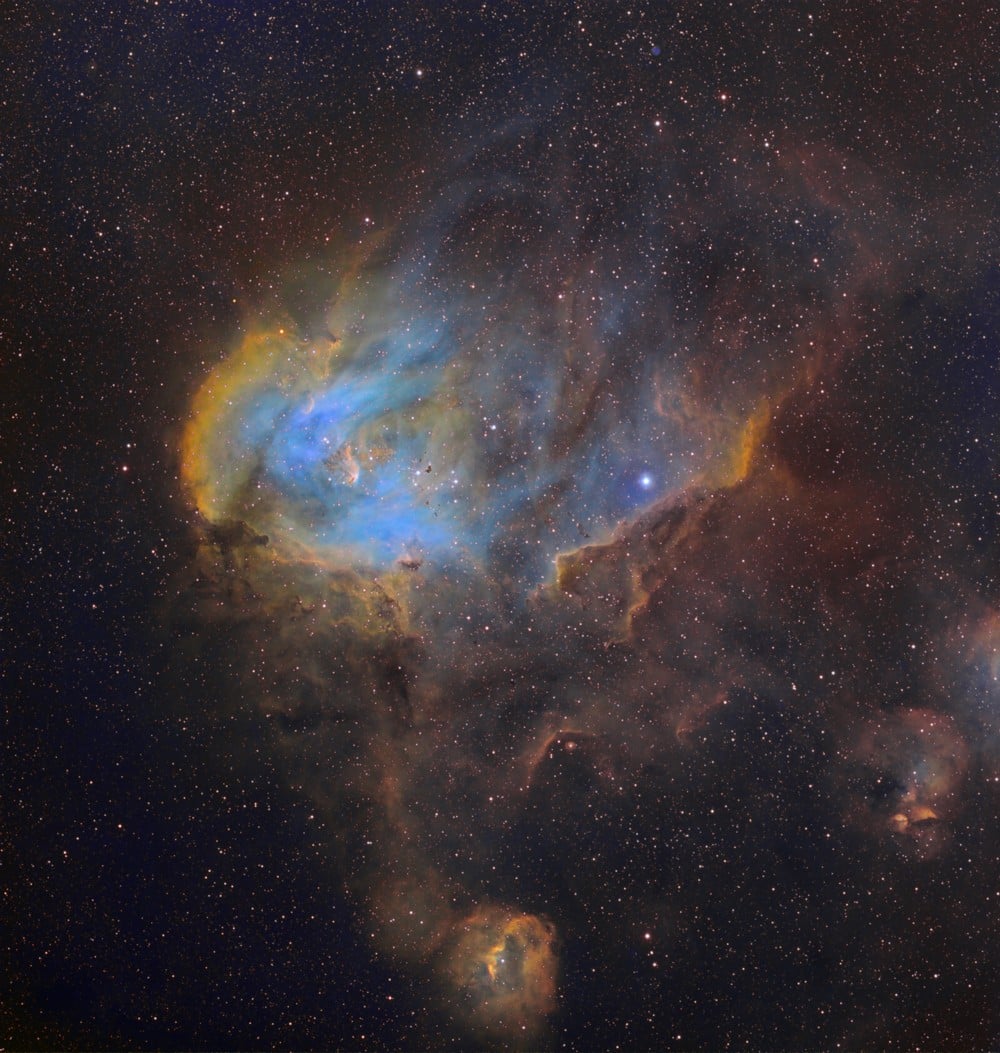Do you think you're seeing a Hubble Image? Then think again. Just revealed at last weekend's NEAF gathering at Rockland College in Suffern, New York, this incredible image of IC 2944 was taken by
Ken Crawford
at Macedon Ranges Observatory and shows so much more than just pretty sky scenery. In this edition of the Universe Today Astronomy Photo of the week, we'll take a deeper look into the science behind the picture as you discover an anomaly known as "Thackeray's Globules"...
The photographic artistry of Ken Crawford takes us on a visual journey ever deeper into the busy star-forming region, IC 2944. While the view of this incredible
emission nebula
is some 6,000 light years away, Ken's work takes us directly in for
close up views of Thackeray's Globules
in ways that stagger the imagination.
IC 2948 is sprawling cloud of gas and dust that is illuminated and heated by a loose cluster of massive stars known as IC 2944. These stars are much hotter and much more massive than our Sun and their strong
stellar winds
carve out unique shapes in the noble hydrogen gases. These busy
star forming HII regions
are home to curious dark masses which we really don't know a whole lot about - except their association.
Dark globules
like these have been known since Dutch-American astronomer
Bart Jan Bok
first began documenting them in 1947 and astronomer A.D. Thackeray first spied the globules in IC 2944 in 1950.
The largest of the globules in IC 2944 could possibly be two separate clouds that appear to partially overlap along our line of sight. Each cloud is nearly 1.4 light-years along its longest dimension and a combination of both clouds contain enough material to equal over 15 solar masses. When you
take a closer look
, you'll see the
globules
appear almost shattered - as if strong forces were pulling them apart. In the case of IC 2944, seeing is believing because when
radio astronomers
observed the faint hiss of molecules within the
globules
, they realized Thackeray's million year old discovery is in constant, aggressive motion, moving along in a supersonic dance. Like a water droplet sprayed against hot metal, this dance may be caused by the powerful ultraviolet radiation from the
luminous, massive stars
. When the region of glowing hydrogen gas is heated, it expands and streams against these dark masses, causing their annihilation.
According the research done by Bo Reipurth, Patrice Corporon, Michael Olberg and Guillermo Tenorio-Tagle: "We believe that the globules are the remnants of an elephant-trunk observed from behind, originating as a Rayleigh-Taylor instability in an expanding neutral shell powered by the hot HII region. The globule complex is now in an advanced stage of disintegration. We have found no evidence for star formation in any of the globules."
Often known as the Running Chicken Nebula or the Lambda Cen Nebula, IC 2944 and IC 2948 is nestled between the Southern Cross and the star-thick
Carina
area on the southern border of Centaurus (RA 11:36.6 Dec -63:02). With an average magnitude of 4.5 and spanning around 75 arc minutes, its collection of bright stars is also referred to as Collinder 249 and was given the designation of Caldwell 100 by
Sir Patrick Moore
. Don't expect to see a vision in either eyepiece or
binoculars
. The cluster is easy... But the nebula is very vague!
*Image Details: IC 2944*
Taken at: MACEDON RANGES OBSERVATORY
AP130 @ F6
/
Paramount ME
Apogee Alta 16803
AstroDon - (5nm Ha & SII) & OIII 3nm Filters
Ha =180 minutes mapped to Green SII =180 minutes Mapped to Red OIII = 240 minutes Mapped to Blue CCDAutoPilot for unattended imaging With
MaxDL 4
 Universe Today
Universe Today
